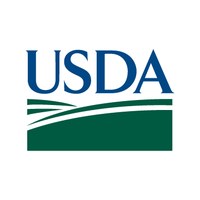The Egg Price Rollercoaster: Navigating the Highs and Lows of a Fragile Market
March 13, 2025, 10:16 pm
The price of eggs has become a hot topic, a rollercoaster ride for consumers and producers alike. As Easter and Passover approach, the demand for eggs spikes. Yet, prices remain sky-high, hovering around $8 to $9 per dozen. The reasons are complex, woven into the fabric of agriculture, disease, and market dynamics.
Egg prices have soared, leaving many consumers in shock. The U.S. Department of Agriculture (USDA) recently reported that egg shortages are easing. Wholesale prices are dropping, hinting at potential relief for shoppers. But the retail side hasn’t caught up yet. Prices remain stubbornly high, like a stubborn child refusing to eat their vegetables.
The root of the problem lies in avian flu outbreaks. These outbreaks have wreaked havoc on poultry farms, decimating flocks and driving prices through the roof. The USDA has noted a two-week lull in major outbreaks, but the threat remains. Wild birds are a significant vector for the virus, and their spring migration poses a risk to egg-laying hens.
Producers are caught in a bind. High prices signal them to ramp up production. But rebuilding flocks takes time. It’s a slow dance, with producers needing months to recover. Experts predict that the next Consumer Price Index (CPI) report may show falling egg prices. But don’t hold your breath. The road to recovery is long and winding.
As prices remain elevated, consumers are adjusting their buying habits. Many are buying fewer eggs, a natural response to sticker shock. This shift in demand could help stabilize prices. But the reality is that the market is still fragile.
Restaurants are feeling the pinch too. Many have added surcharges to offset rising egg costs. Diners may notice these changes on their bills, a subtle reminder of the economic pressures at play.
The government is stepping in, unveiling a plan to combat avian flu. This includes a hefty $500 million investment to bolster biosecurity measures. Another $400 million aims to aid farmers whose flocks have been impacted. But these measures will take time to bear fruit. The clock is ticking, but the harvest is still far off.
Vaccination could be a game-changer. Countries like China and Mexico have successfully vaccinated their poultry. Yet, the U.S. remains hesitant. The poultry industry’s opposition complicates matters. The government is wary of changing its policy of culling infected birds. It’s a political quagmire, with egg prices serving as a flashpoint.
The U.S. must devise a robust vaccination strategy. Monitoring vaccinated flocks for outbreaks is crucial. But the fear of the virus mutating looms large. Vaccination could allow the virus to linger undetected, creating a ticking time bomb. The stakes are high, and the industry is treading carefully.
Distribution poses another challenge. Egg farmers prefer administering vaccines through feed or water. The idea of giving shots to millions of birds is impractical. This logistical hurdle adds another layer of complexity to an already tangled situation.
Experts agree that the U.S. needs to continue culling flocks even after vaccination. This dual approach could help manage outbreaks while protecting the food supply. But it’s not a silver bullet. The industry must navigate a minefield of trade concerns and consumer confidence.
As Easter approaches, demand will spike. This could lead to a temporary increase in prices, even as wholesale rates drop. The market is a fickle beast, reacting to supply and demand dynamics.
Looking ahead, the USDA predicts that average egg prices will be 41% higher than last year. This translates to about $4.47 per dozen, slightly below current averages. But the relief may not come until after the peak demand period.
The future of egg prices remains uncertain. The industry is in a delicate balancing act, trying to manage supply while responding to consumer demand. The threat of avian flu looms large, casting a shadow over the market.
In the end, the egg market is a microcosm of larger economic forces. It reflects the challenges of agriculture, the impact of disease, and the complexities of consumer behavior. As we navigate this turbulent landscape, one thing is clear: the price of eggs is more than just a number. It’s a reflection of our interconnected world, where every decision has consequences.
So, as you crack open that egg for breakfast, remember the journey it took to get there. The highs and lows of the market are part of a larger story, one that continues to unfold. The egg price rollercoaster is far from over, and consumers will need to hold on tight.
Egg prices have soared, leaving many consumers in shock. The U.S. Department of Agriculture (USDA) recently reported that egg shortages are easing. Wholesale prices are dropping, hinting at potential relief for shoppers. But the retail side hasn’t caught up yet. Prices remain stubbornly high, like a stubborn child refusing to eat their vegetables.
The root of the problem lies in avian flu outbreaks. These outbreaks have wreaked havoc on poultry farms, decimating flocks and driving prices through the roof. The USDA has noted a two-week lull in major outbreaks, but the threat remains. Wild birds are a significant vector for the virus, and their spring migration poses a risk to egg-laying hens.
Producers are caught in a bind. High prices signal them to ramp up production. But rebuilding flocks takes time. It’s a slow dance, with producers needing months to recover. Experts predict that the next Consumer Price Index (CPI) report may show falling egg prices. But don’t hold your breath. The road to recovery is long and winding.
As prices remain elevated, consumers are adjusting their buying habits. Many are buying fewer eggs, a natural response to sticker shock. This shift in demand could help stabilize prices. But the reality is that the market is still fragile.
Restaurants are feeling the pinch too. Many have added surcharges to offset rising egg costs. Diners may notice these changes on their bills, a subtle reminder of the economic pressures at play.
The government is stepping in, unveiling a plan to combat avian flu. This includes a hefty $500 million investment to bolster biosecurity measures. Another $400 million aims to aid farmers whose flocks have been impacted. But these measures will take time to bear fruit. The clock is ticking, but the harvest is still far off.
Vaccination could be a game-changer. Countries like China and Mexico have successfully vaccinated their poultry. Yet, the U.S. remains hesitant. The poultry industry’s opposition complicates matters. The government is wary of changing its policy of culling infected birds. It’s a political quagmire, with egg prices serving as a flashpoint.
The U.S. must devise a robust vaccination strategy. Monitoring vaccinated flocks for outbreaks is crucial. But the fear of the virus mutating looms large. Vaccination could allow the virus to linger undetected, creating a ticking time bomb. The stakes are high, and the industry is treading carefully.
Distribution poses another challenge. Egg farmers prefer administering vaccines through feed or water. The idea of giving shots to millions of birds is impractical. This logistical hurdle adds another layer of complexity to an already tangled situation.
Experts agree that the U.S. needs to continue culling flocks even after vaccination. This dual approach could help manage outbreaks while protecting the food supply. But it’s not a silver bullet. The industry must navigate a minefield of trade concerns and consumer confidence.
As Easter approaches, demand will spike. This could lead to a temporary increase in prices, even as wholesale rates drop. The market is a fickle beast, reacting to supply and demand dynamics.
Looking ahead, the USDA predicts that average egg prices will be 41% higher than last year. This translates to about $4.47 per dozen, slightly below current averages. But the relief may not come until after the peak demand period.
The future of egg prices remains uncertain. The industry is in a delicate balancing act, trying to manage supply while responding to consumer demand. The threat of avian flu looms large, casting a shadow over the market.
In the end, the egg market is a microcosm of larger economic forces. It reflects the challenges of agriculture, the impact of disease, and the complexities of consumer behavior. As we navigate this turbulent landscape, one thing is clear: the price of eggs is more than just a number. It’s a reflection of our interconnected world, where every decision has consequences.
So, as you crack open that egg for breakfast, remember the journey it took to get there. The highs and lows of the market are part of a larger story, one that continues to unfold. The egg price rollercoaster is far from over, and consumers will need to hold on tight.

